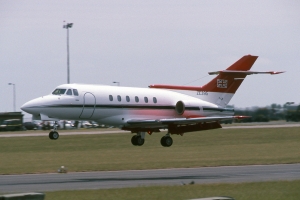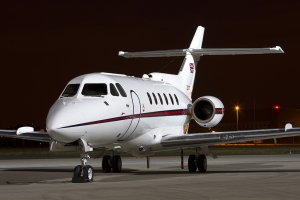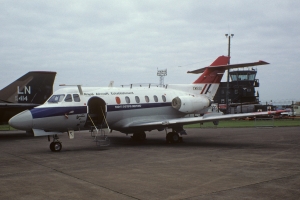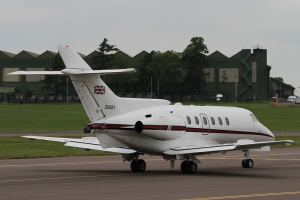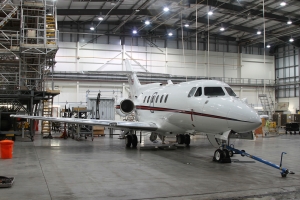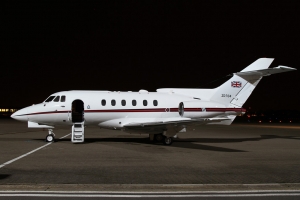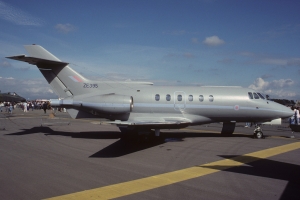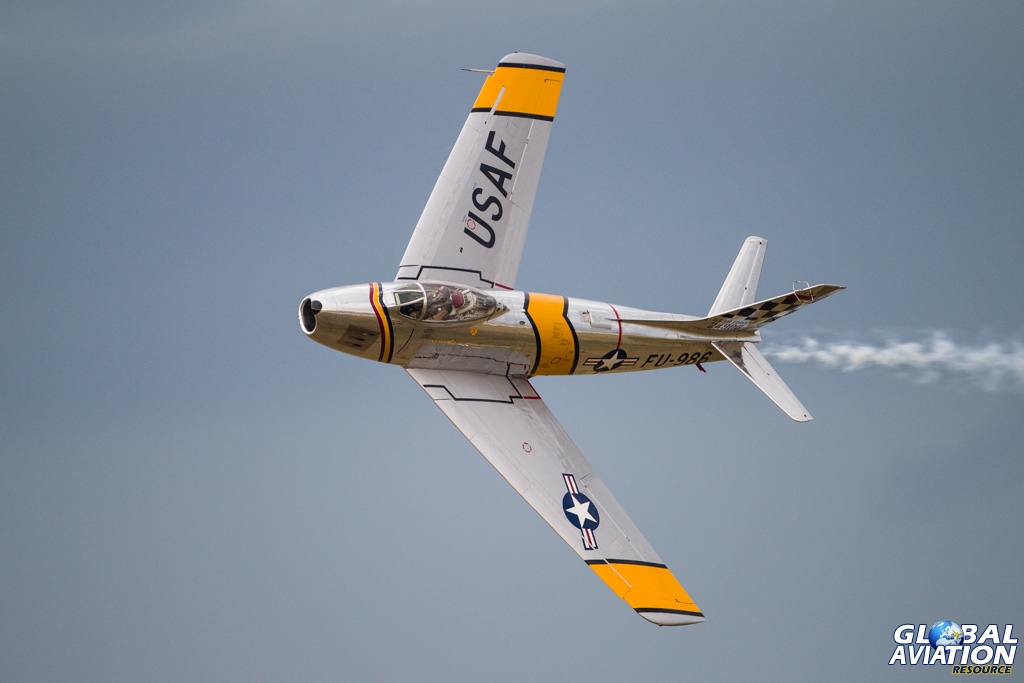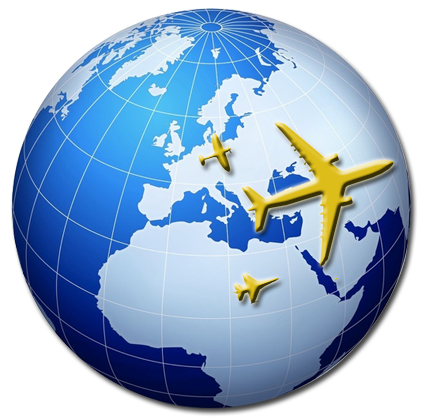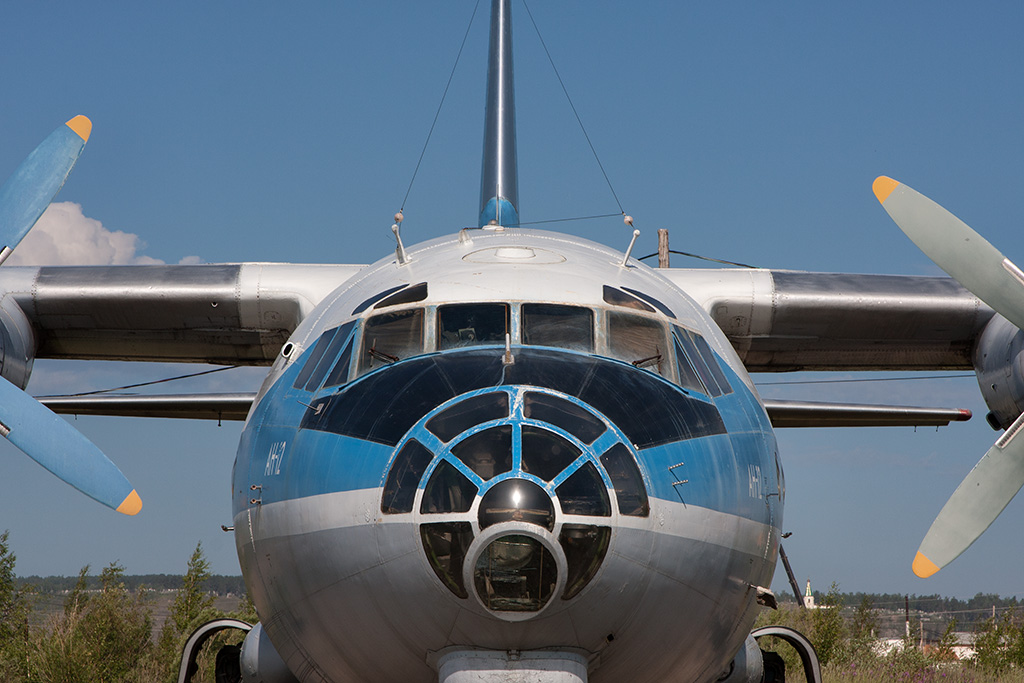This week saw another type of aircraft bow out of service with Britain’s Royal Air Force. Chris Wood looks back on the service of the BAe 125 as the RAF’s last few examples retire from No 32 (The Royal) Squadron at RAF Northolt.

The sun has set on the RAF’s 125 fleet © Tom Gibbons – Global Aviation Resource
The original 125 project started in 1961 and it was originally known as the de Havilland DH125 Jet Dragon, despite de Havilland having become part of Hawker Siddeley in 1960. The de Havilland name was dropped in 1963 and it became the Hawker Siddeley HS125. It was a small business jet, one of the first, and was designed as a replacement for de Havilland’s Dove series of twin piston engined aircraft. It featured a pressurised cabin with seats for six passengers, and was originally powered by a pair of rear-mounted Armstrong Siddeley (later Bristol Siddeley then Rolls Royce) Viper turbojets. Later aircraft were powered by a pair of Garrett TFE 731 turbofans, which were more economical and quieter, and some of the Viper engined models were refitted with the Garrett engine. In 1977 Hawker Siddelely merged with the British Aircraft Corporation to form British Aerospace (BAe), and the 125 became known as the BAe 125.
The first flight of the 125 occurred on 13 August 1962 and the first customer aircraft was delivered on 10 September 1964. The RAF were early customers, ordering 20 aircraft as navigation trainers, designated as the Dominie T1. The prototype Dominie first flew in December 1964 and the type entered service with No 1 Air Navigation School at RAF Stradishall, Suffolk, in December 1965. They were also operated by the College of Air Warfare at RAF Strubby, Lincolnshire, with the first aircraft arriving there in February 1966. Stradishall closed in 1970 and No 1 ANS moved to RAF Finningley in Yorkshire to become part of No 6 Flying Training School. When Strubby closed in September 1972 their Dominies moved across to nearby RAF Manby. However, Manby closed in March 1974 and the College of Air Warfare moved to the RAF College at Cranwell. Subsequently, all 20 aircraft were operated by 6 FTS from Finningley.
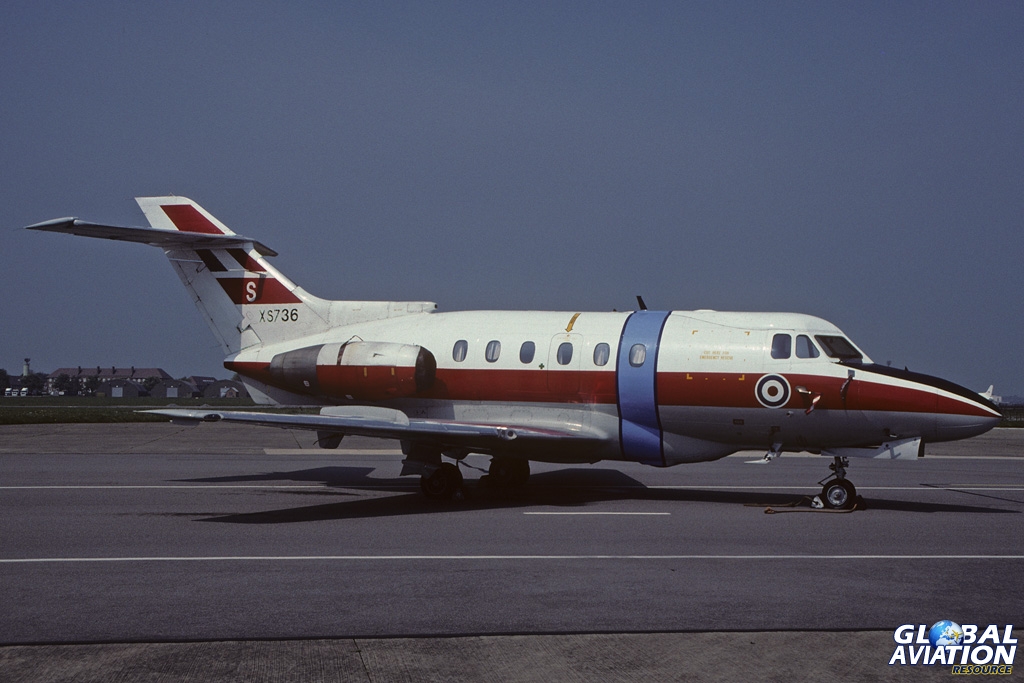
A Dominie wearing the markings of the RAF College at Cranwell © Chris Wood – Global Aviation Resource
In 1996 the aircraft went through a major upgrade programme, which included the installation of a modern avionics suite with a Super Searcher ground mapping radar. In November of that year, as a result of the closure of Finningley, they moved to the RAF College at Cranwell to be operated by No 55 (Reserve) Squadron. The last six examples, still operated by No 55 (R) Squadron, were retired in January 2011.
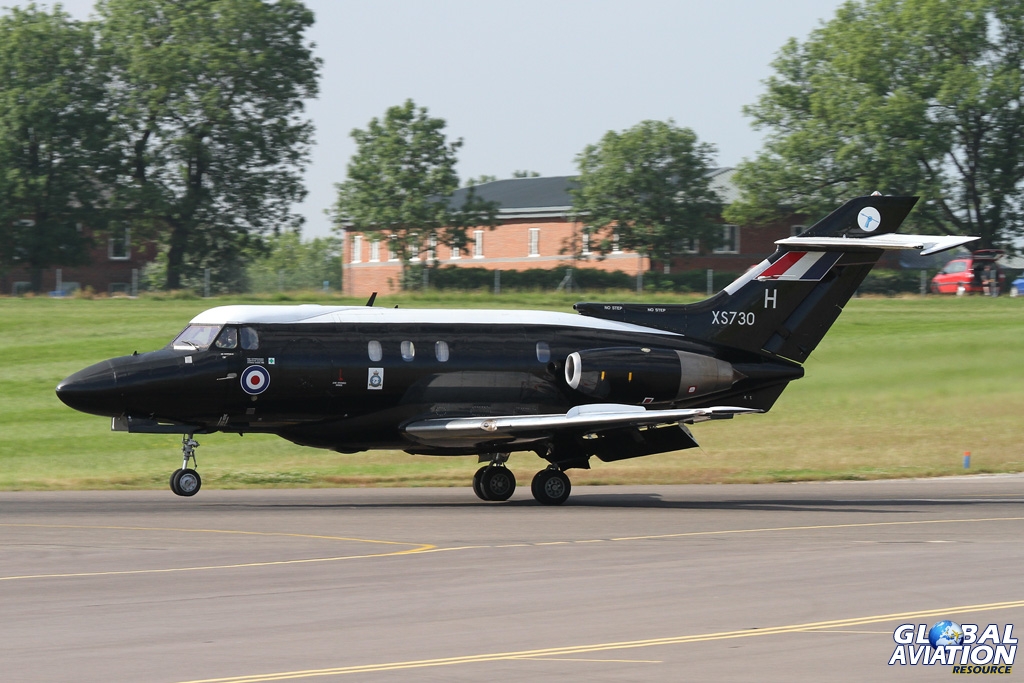
Latterly the Dominies were painted black © Chris Wood – Global Aviation Resource
In 1969 the Metropolitan Communications Squadron at RAF Northolt, in the London Borough of Hillingdon, was renamed No 32 Squadron. In 1971 it received four HS 125 CC1s (XW788 to 791), based on the Viper powered -400B series, for VIP transport duties. The 125-400B featured increased operating weights and an outward opening forward door.
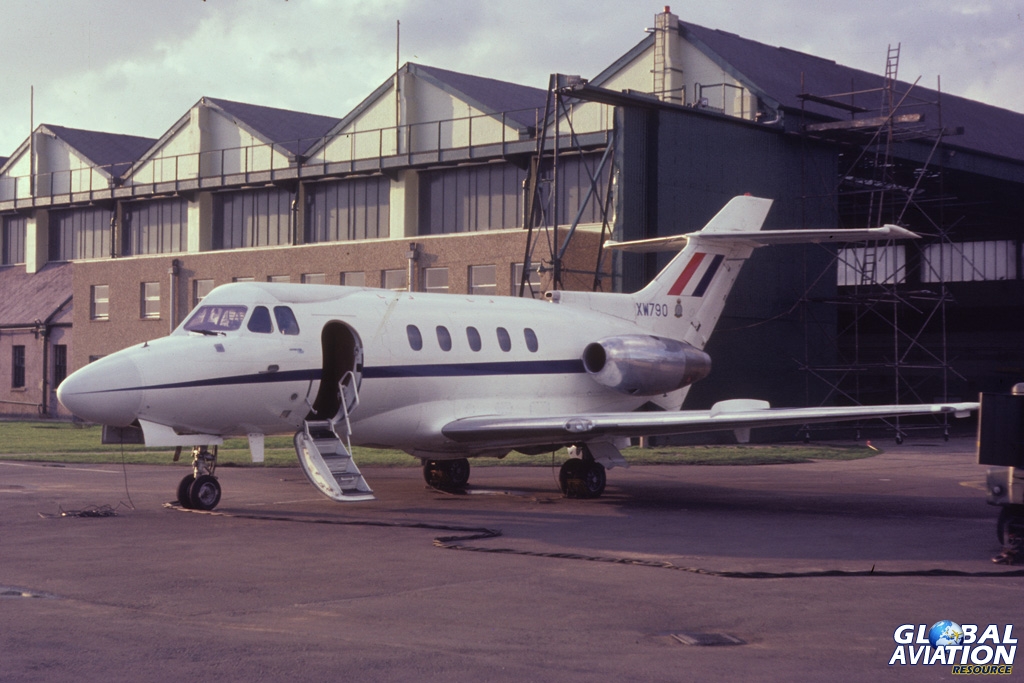
A Viper powered CC1 outside the north side hangars at Northolt in February 1977 © Chris Wood – Global Aviation Resource
Another two (XX505 and 506) were leased for a few months in late 1972 but were replaced in 1973 by a pair of CC2s (XX507 and 508), based on the -600B version. This variant featured a longer fuselage, with six cabin windows compared to the five of the earlier models. It also had an increased fuel capacity, and saw a further increase in operating weights and speeds. In 1982 and ’83 a further six CC3s (ZD620 and 621, 703 and 704, plus ZE395 and 396), based on the -700B version, were added. These were built with Garrett engines.

One of two CC2s seen at Waddington in May 1995 © Kevin Jackson – Global Aviation Resource
In 1982/83 the CC1s and CC2s had their Viper engines replaced with Garrett TFE 731s.
In 1988 one aircraft, ZD620, was painted grey, in keeping with all the RAF’s front line assets, and the remaining aircraft followed, starting in 1991.
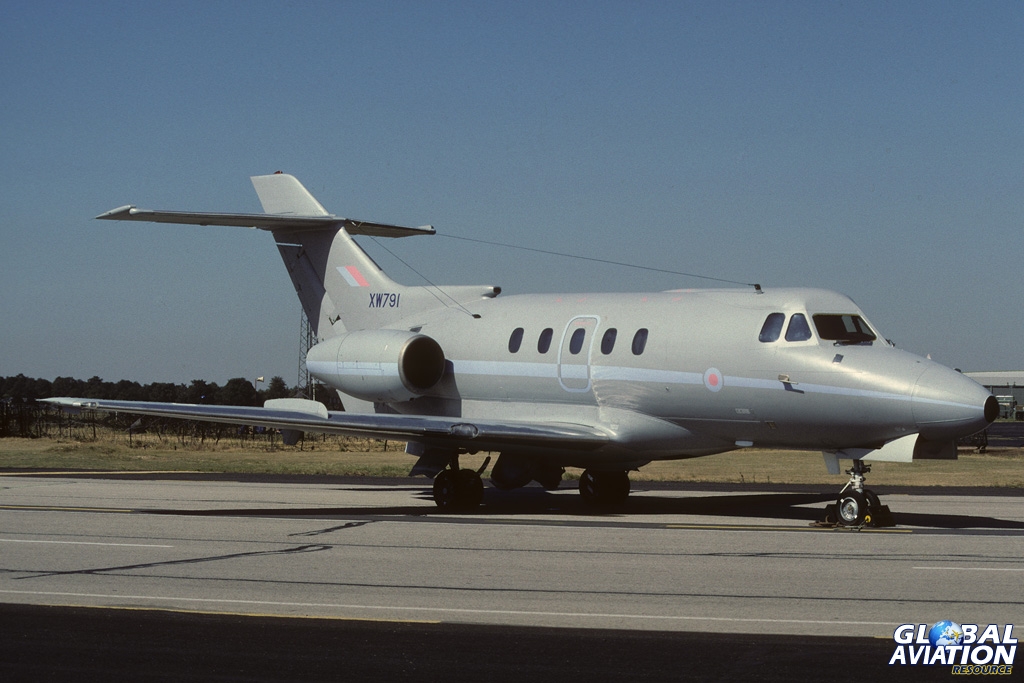
Grey CC1 at Brize Norton in 1991 © Chris Wood – Global Aviation Resource
The remaining CC1s were retired and sold to the civil market in 1994, with the CC2s following in 1998.
On 1 April 1995 the Queen’s Flight moved to Northolt and merged with No 32 Squadron, which subsequently became known as No 32 (The Royal) Squadron. This resulted in the 125s being repainted into the same livery as the former Queen’s Flight aircraft.

© Kevin Jackson – Global Aviation Resource
However in 2004 they lost this colour scheme as it was considered that it made them conspicuous and vulnerable to terrorist attack.
They also received an electronic defensive aids suite (DAS), which provided 360 degree protection against infrared missiles.
The aircraft were used to transport members of government, royalty, senior military officers and aircrew, and could be seen all around Europe as well as further afield. Latterly they provided a valuable service to commanders during the conflicts in the Middle East.
One little known aspect of 32 Squadron’s 125 operations was that two of the original aircraft were funded by the Royal Navy, which meant that a small number of RN pilots served with the squadron.

An example of each type operated by 32 Squadron, prior to the 125’s retirement © Chris Wood – Global Aviation Resource
The CC3s soldiered on and at one point an out-of-service (OOS) date of 2022 was proposed. However, one aircraft (ZD704) was badly damaged at Kandahar in April 2013 by a hail storm and not repaired, and another (ZE396) was retired in February 2015. The OOS for the other four was brought forward to 31 March 2015, with no sign of a replacement. Three (ZD620, ZD703 and ZE395) were put up for sale by the Disposal Sales Authority in February.

A pair of CC3s return to Northolt after a flypast Dean West © www.globalaviationresource.com
It is planned that the remaining aircraft, ZD621, will return to Northolt to be put on display outside No 32 (TR) Squadron’s building. This would seem a fitting tribute to a British success story, and to an aircraft that has served the RAF well for almost 50 years.
That isn’t quite the end of the story of the 125 in British military service. Two further aircraft were purchased for trials work. XW930, a very early series 1B, was bought in 1970 and was initially used by the Flight Systems Department at RAE Bedford for turbulence, windshear, downburst and wake vortex research. It was subsequently fitted with the Blue Vixen radar, under development for the Sea Harrier FA2.

XW930 seen at the St Mawgan airshow in August 1980 © Chris Wood – Global Aviation Resource
A second aircraft, -600B ZF130, was purchased in 1985 and was also fitted with the Blue Vixen radar, and operated by BAe from Dunsfold.
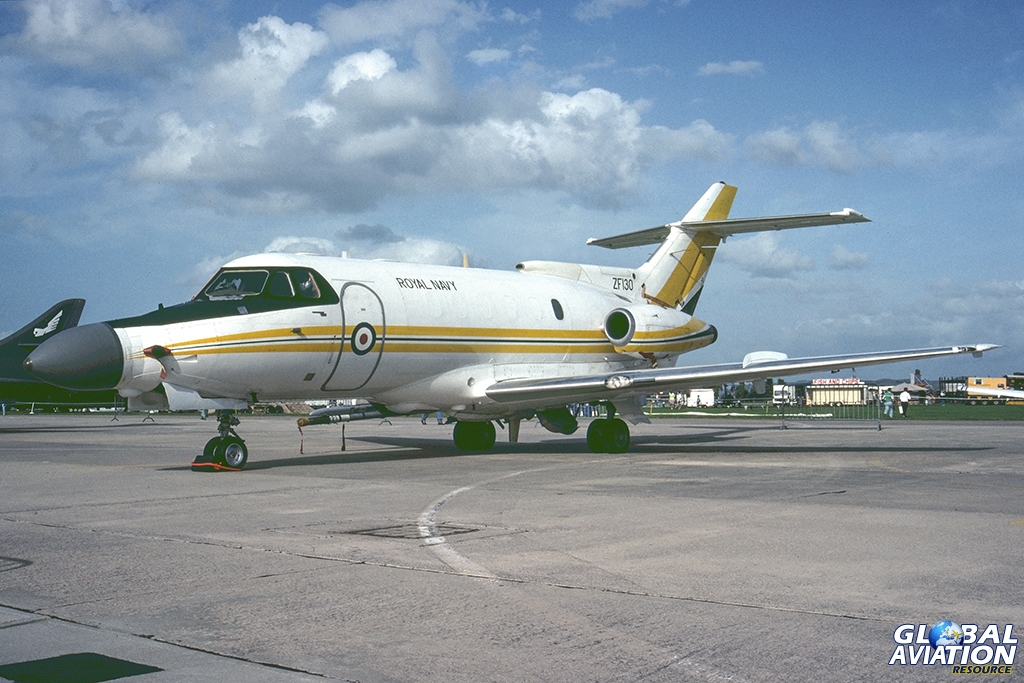
ZF130 © Tom Gibbons Collection – Global Aviation Resource





